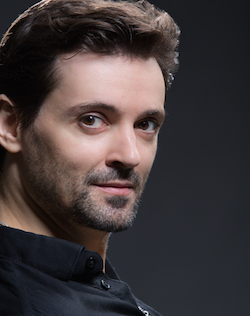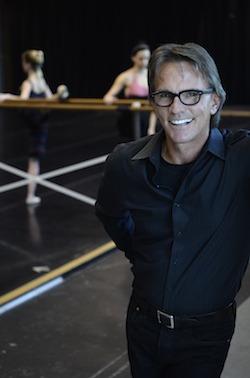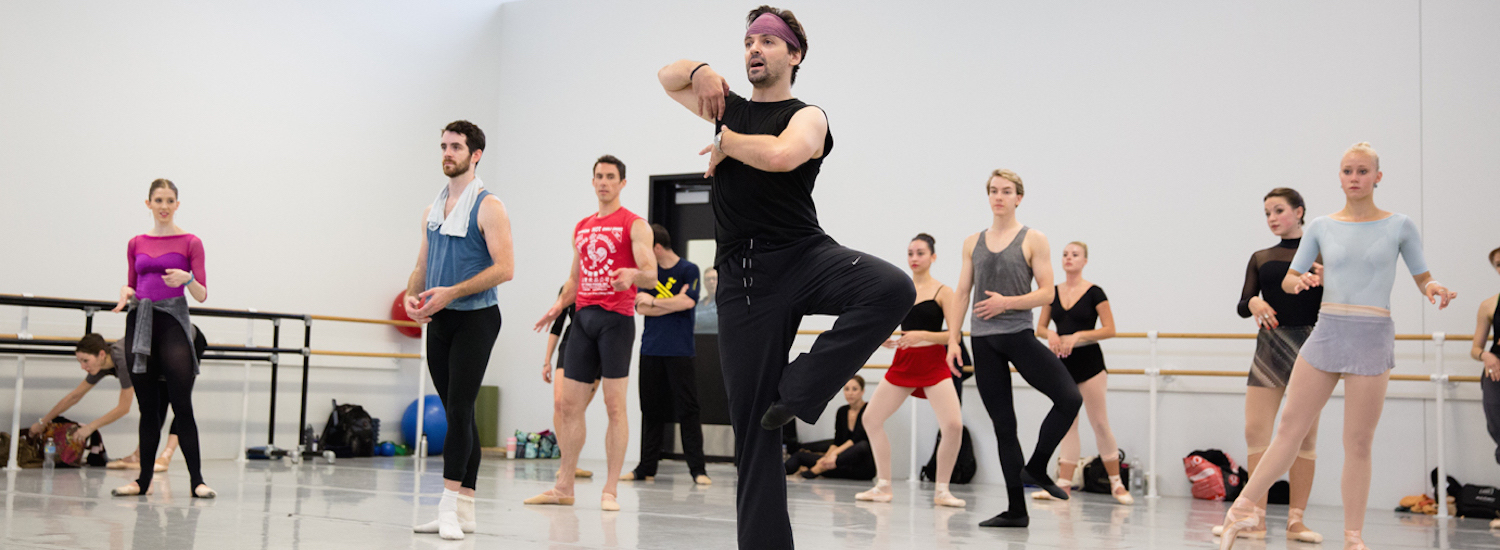Aspiring ballet dancers in America often set their sights on pursuing a career in New York City, a place where renowned companies such as American Ballet Theatre and New York City Ballet hold reign. Who wouldn’t want this to be the dream?
Dancers should keep in mind, however, that exciting, international level work is going on at ballet companies all across the country. New York is not the only place where a dancer’s dreams of a fulfilling professional career can come true. When thinking about participating in pre-professional programs and summer intensive workshops with ballet companies as a stepping stone to an eventual job, young dancers should keep their options open and research companies outside of New York. These companies often have a repertoire of equal caliber of ABT and NYCB, and more often than not, a smaller pool of corps de ballet members to wade through on the quest for a principal position.

Artistic Director of the Pennsylvania Ballet, Angel Corella. Photo by Alexander Iziliaev.
Angel Corella, Artistic Director of Pennsylvania Ballet, explains:
“Sometimes when you go to a really large company, you get lost in the corps de ballet for many, many, many years, and sometimes your career finishes and you’ve never really gotten your chance. The great thing about a smaller company is that everyone gets a chance sooner or later. And so a lot of dancers at a great level choose to come to a smaller company,” he says. “Internationally, they could be principal dancers at any major company around the world but they choose to come to us not only to have the opportunity to dance more, but to be directed by an artistic director with an artistic vision.”
Corella mentions that dancers from all over the world are knocking on Pennyslvania Ballet’s door to ask for work. He, like many artistic directors, takes care to not think of Pennsyvlania Ballet as a “regional” company just because it is not located in New York City.
Mikko Nissinen, Artistic Director of Boston Ballet agrees.
“We are a mobile, modern city, and our dancers get to do contemporary, relevant work at an international level,” he says.
The technical and performance skills of dancers across the country is equal, if not possibly greater than those in New York City, often due to the diverse repertory and innovative work taking place. Nissinen says, “We ask our dancers to be so strong that they can become vulnerable.”
Dancers at companies like Boston Ballet, Pennsylvania Ballet, and Miami City Ballet often get the chance to perform new and exciting work that is specifically created for them, giving them the opportunity to demonstrate and challenge their versatility.
Lourdes Lopez, Artistic Director of Miami City Ballet, says, “MCB dancers can go from a wide range of styles in dance. They don’t just excel at the Balanchine repertoire and the classics; they deliver the modern and contemporary styles seamlessly.”
This versatility seems to be a trend among companies outside of New York City. Septime Webre of The Washington Ballet, one of the most ethnically diverse companies in the world, explains that since they share the Kennedy Center stage with the big New York City companies, The Washington Ballet works especially hard to produce new and exciting ballets that make them stand out among the crowd.

Miami City Ballet Artistic Director Lourdes Lopez. Photo by Alberto Oviedo.
While still housing a classical repertoire, The Washington Ballet ventures into original, contemporary work by choreographers such as Christopher Wheeldon, Mark Morris, Twyla Tharp, William Forsythe and Nacho Duato, to name a few. The powerhouse company performs everything from story ballets based on The Little Mermaid to entire evenings based on the music of Queen and David Bowie.
In some parts of the country, Ballet and the arts in general are undergoing a revival, coming back from the financial struggle of the past 5-10 years and making smaller cities more enticing for aspiring dancers.
The 42 year-old Orlando Ballet is reaping such benefits. With a new performing arts center in Orlando, audience numbers are increasing, and Orlando Ballet has newly committed to performing to live music at all of their performances.
“It’s hard for me to gloat,” says Artistic Director Robert Hill, “but there really is good stuff happening here. And it’s continuing to change and get better.”
Orlando Ballet’s school is ABT certified, and students go on to win awards at national competitions such as the Youth America Grand Prix. Additionally, students in the upper level school and junior company are invited to perform in almost every mainstage performance that Orlando Ballet presents, allowing them to gain valuable performance experience. Aspiring dancers should not overlook the chance to study with teachers and choreographers dedicated to helping them grow.
“I see one of the reasons dancers come to Orlando is to work with Robert,” says Dierdre Burger, director of the school at Orlando Ballet. “He is a very ‘hands on’ director and is in the studio with them every day, teaching and coaching. He also choreographs a good number of works on them, utilizing their strengths and stretching their possibilities.”
Finding the right company atmosphere is also an important element of a dance career to consider. Not all companies work or function in the same way.

Orlando Ballet’s Artistic Director Robert Hill. Photo courtesy of Hill.
Lopez explains what it’s like to work at Miami City Ballet:
“MCB is a distinctive company, which works more like a family, than an institution, so it may not be right for everyone. We are truly a family here and our collective interest is about becoming better artists, working, learning, supporting each other, and creating a positive environment. In other words, we are here for one another and the art form. Also, while our dancers are ranked they make themselves available to dance any role that is required of them. Everyone dances here.”
From Philadelphia to Miami, smaller cities are generating great art by tapping into the energy of their communities. This makes them interesting places to work with different possibilities than those in New York City.
“The city is going through a very distinct cultural renaissance; it really feels like this ‘culture happening moment’ for the city,” says Lopez about Miami. “There is an energy, vitality and diversity that is unique to Miami and our dancers reflect all of this. Diversity is important to me, but MCB isn’t just diverse, it’s a mosaic, just like the city. Each dancer is an individual and yet, each is an integral part of the company.”
Corella has felt something similar in Philadelphia, noting a shift in energy over the past few years that has encouraged him to ask for more input from his dancers. Like all of the companies mentioned in this article, Pennsylvania Ballet presents the classical ballets with the highest level of professionalism, but the company also introduces ballets to the people of Pennsylvania that they have never seen. The audience is eager for more.
“Philadelphia is attracting a lot of people,” Corella says. “I don’t know what it is, but I’m very excited about that.”
By Katherine Moore of Dance Informa.
Photo (top): Angel Corella teaching the Pennsylvania Ballet Company Dancers. Photo by Alexander Iziliaev.















